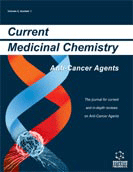Abstract
The phosphatidylinositol 3-kinase (PI3K)/Akt (protein kinase B, PKB) signaling pathway plays a critical role in cell growth and survival. Dysregulation of this pathway has been found in a variety of cancer cells. Recently, constitutively active PI3K/Akt signaling has been firmly established as a major determinant for cell growth and survival in an array of cancers. Blocking the constitutively active PI3K/AKT signaling pathway provides a new strategy for targeted cancer therapy. Thus, inhibitors of this signaling pathway would be potential anticancer agents, particularly for cancer cells whose survival and growth are dominated by constitutively active PI3K/Akt signaling. This review describes the current understanding of small molecule drugs targeting this pathway both in vitro and in vivo. Inhibitors and functions of the upstream and downstream molecular targets of the PI3K/Akt pathway are discussed in the context of using the inhibitors to block this pathway for targeted cancer therapy. Special emphasis is placed on the following targets: receptor tyrosine kinases, PI3K, Akt, and the mammalian target of rapamycin. While the molecular therapeutic strategy holds great promise for the treatment of a variety of cancers, few small molecule inhibitors with potential high therapeutic indexes are available. Thus, new inhibitors with high selectivity, bioavailability, and potency are greatly needed. Novel approaches toward the development of PI3K/Akt pathway inhibitors as anticancer therapeutics are discussed in detail, with emphasis on chemical genetics-based and structure-based drug design.
Keywords: pI3k, akt/pkb, mtor, rtk, signal transduction, inhibitor, anticancer target, chemical genetics
 10
10

















